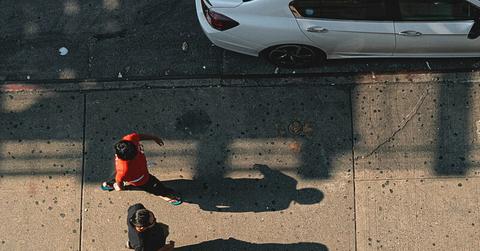
Annual Sidewalk Inspections: A Must-Do to Prevent NYC Violations
In the concrete jungle of New York City, sidewalks are more than just pedestrian pathways—they’re a legal responsibility for property owners. With over 12,000 miles of sidewalks crisscrossing the five boroughs, the NYC Department of Transportation (DOT) relies on property owners to maintain the sections adjacent to their buildings. That means if your sidewalk is cracked, uneven, or otherwise hazardous, you could be on the hook for repairs, violations, and even liability for injuries. The best way to stay ahead of these issues? Annual sidewalk inspections.
Why Sidewalk Inspections Matter
NYC DOT Sidewalk violation status aren’t just cosmetic concerns. They’re legal notices issued by the DOT when a sidewalk is found to be defective. These violations can lead to costly repairs, liens on your property, and potential lawsuits if someone is injured. The city gives property owners 75 days to fix the problem before stepping in to make the repairs themselves—and billing you for the work.
Annual inspections help you catch problems before they escalate. By identifying and addressing minor issues early, you can avoid violations altogether and save money in the long run.
What the DOT Looks For
Understanding what the DOT considers a defect is key to a successful inspection. Common sidewalk violations include cracks wider than half an inch, uneven flags with a height difference greater than half an inch, missing or broken sections, improper slope that causes water to pool, and hardware protrusions like cellar doors or utility covers that aren’t flush with the surface. Even a small hole or a slightly raised slab can trigger a violation if it poses a tripping hazard.
The DOT also enforces ADA compliance, which means sidewalks must be accessible to people with disabilities. That includes proper curb ramps, level surfaces, and unobstructed pathways.
How to Conduct an Effective Inspection
Start by walking the entire length of your sidewalk, ideally with a flashlight and a measuring tape. Look for cracks, gaps, or uneven surfaces. Check for pooling water after rain, which could indicate drainage issues or improper slope. Examine the condition of curbs, tree pits, and any hardware embedded in the sidewalk. If you notice any defects, document them with photos and measurements.
It’s also a good idea to inspect after winter, when freeze-thaw cycles can cause significant damage, and after major storms or nearby construction that may have shifted the ground.
When to Call in the Pros
While a visual inspection can catch obvious issues, a professional sidewalk contractor can identify more subtle problems and recommend the best course of action. Many contractors offer inspection services and can provide a detailed report outlining any necessary repairs. They’ll also be familiar with DOT standards and can help ensure that any work you do is compliant.
If repairs are needed, make sure to hire a contractor licensed by the NYC Department of Consumer and Worker Protection. For jobs over $200, the contractor must also hold a Home Improvement Contractor License. They’ll need to obtain a sidewalk construction permit before starting work, which ensures the repairs meet city regulations.
Tree Roots and Special Considerations
Tree roots are a common cause of sidewalk damage in NYC. If the damage is caused by a city-owned tree and your property is a one-, two-, or three-family home that is owner-occupied, you may be eligible for assistance through the Parks Department’s Trees and Sidewalks Program. However, for commercial properties or larger residential buildings, the responsibility typically remains with the property owner—even if the damage is caused by city trees.
If you suspect tree roots are the culprit, consult with the Parks Department before attempting any repairs. Unauthorized root cutting can damage the tree and result in additional fines.
Staying Violation-Free Year-Round
Annual inspections are just one part of a broader sidewalk maintenance strategy. Keep your sidewalk clear of debris, snow, and ice. Trim overgrown vegetation and ensure that any temporary obstructions—like scaffolding or dumpsters—are properly permitted and don’t block pedestrian access. During winter, shovel snow promptly and use de-icing products that won’t damage concrete.
Preventive maintenance is also key. Seal small cracks before they widen, and address drainage issues before they lead to erosion or sinking. Consider scheduling biannual inspections—one in the spring and one in the fall—to stay ahead of seasonal wear and tear.
Final Thoughts
In a city where the sidewalk is your front yard, staying on top of maintenance isn’t just smart—it’s essential. Annual sidewalk inspections give you the power to catch problems early, avoid DOT violations, and protect your property from costly repairs and legal risks. With a little vigilance and the right professional support, you can keep your sidewalk safe, compliant, and looking its best all year long. Navigating NYC’s sidewalk repair rules just got easier Nycsidewalkviolations.com is your one-stop resource for understanding, resolving, and preventing costly citations.
